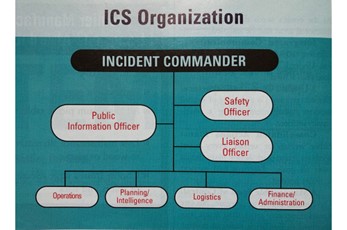Operating Procedures
The following suggestions are intended to help you become a better operator whether participating in a ham radio contest or public service event.
The first thing to remember is to stay calm. When transmitting, always talk across the front of the microphone, not directly into it. You will want to speak slowly, distinctly, and clearly. Hold the microphone button down for at least two seconds before beginning your message. This will assure that the first part of your transmission is not cut off. You should know what you are going to say before you push the mic button. It is not wise to waste air space stammering or creating long pauses.
Listen before transmitting to be sure you are not “doubling” with another station. Many new or stressed operators have a tendency to talk fast. Even if you are in an emergency situation, remember to speak slowly and clearly. Try to remember that accuracy is your number one goal and speed will come.
Net Control Stations are also frequently busy with work that is not on the air. If you call the NCS and do not get a reply, be patient and call again in a minute or two. If it is an emergency or priority, use the proper break tag; otherwise you should space out your calls to the NCS. Only transmit facts. If your message is a question, deduction, educated guess or hearsay, identify it as such. Do not clutter the air with non-essential information.
You should always monitor the net frequency. If you must leave the frequency for any reason, ask permission from the NCS. Advise NCS when you return to the frequency as well. It is important that the NCS knows the whereabouts of each station in the net.
Make sure you always acknowledge calls and instructions. You can acknowledge by just giving your tactical callsign (covered below). Silence in response to a message is very disruptive to the flow of traffic on a net. When contacting Net Control, wait for NCS to acknowledge you before giving your traffic. NCS may not be ready to accept your traffic and it could cause confusion, or at the very least, you most likely will need to repeat yourself.
When passing a message, it’s good practice to write the message as you speak it. That way you’ll slow down so the recipient can copy the message. When in doubt, always slow down for a good copy.
Try to use a headset whenever possible. In some instances, this is very important. Often there are people or other distracting noises near your position that are not involved in the operation and are not aware of what is happening. Words from others could be misunderstood or drown out actual instruction. False information could also cause a lot of problems for your operation. In a high ambient noise level environment, a headset is mandatory so NCS and other stations can hear you.
As you can see, this material is directed toward voice operation, as it is the mode most used in event operations.
Tactical Callsigns
A callsign is a name used to refer to a specific person or unit based on their role in the mission. As a ham, you are familiar with being referred to by your amateur radio callsign. Tactical call signs, however, identify the station’s location or its purpose during an event, regardless of who is operating the station. By using tactical callsigns, the net can be conducted without regard to which operator is at the radio. They identify the position that is in communication and not a sole operator.
You can use the tactical callsign to identify your transmission and to address another station by its own tactical callsign. No ham callsign is necessary in a two-way conversation once communications have been established. To comply with FCC rules, add your FCC callsign to your last transmission in a series. It is not necessary to add the receiving party’s FCC callsign, just your own.
Example from a marathon:
Water Stop Two: “Net Control. Water Stop Two.”
Net Control: “Water Two, Go.”
Water Stop Two: “The lead marathon runner just passed my location.”
Net Control: “Copy lead runner passing Water Two. W8XRN (NCS FCC callsign).”
Water Stop Two: “KE8FMJ (Water Two FCC callsign).”
Signing with your FCC callsign will signify ending your transmission. Best practice is always to establish contact using your Tactical Call and end the contact with your FCC Call.

ICS Tactical Calls by Position
Questions? Share them in the comments below or email me at KE8FMJ@arrl.net.

